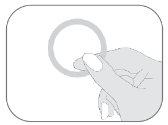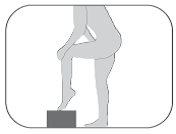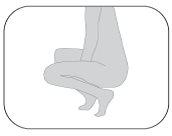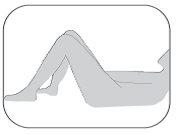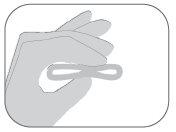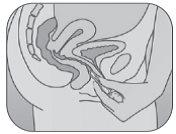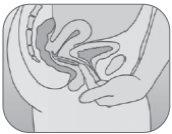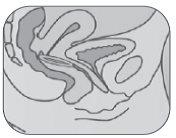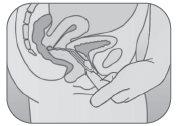
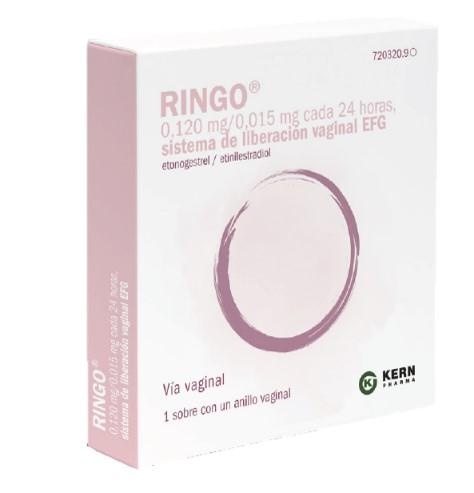
РИНГО 0,120 МГ/0,015 МГ КАЖДЫЕ 24 ЧАСА, ВАГИНАЛЬНАЯ СИСТЕМА ДОСТАВКИ


Инструкция по применению РИНГО 0,120 МГ/0,015 МГ КАЖДЫЕ 24 ЧАСА, ВАГИНАЛЬНАЯ СИСТЕМА ДОСТАВКИ
Введение
Инструкция: Информация для пользователя
Ринго 0,120 мг/0,015 мг каждые 24 часа, вагинальная система с контролируемым высвобождением ЭФГ
Этоногестрел/Этинилэстрадиол
Важные вещи, которые вы должны знать об гормональных контрацептивах:
- Это один из наиболее надежных методов обратимой контрацепции, если использовать его правильно.
- Немного увеличивает риск образования тромба в венах и артериях, особенно в первый год или когда возобновляется использование гормонального контрацептива после перерыва 4 недели или более.
- Будьте бдительны и проконсультируйтесь с врачом, если вы считаете, что у вас могут быть симптомы тромба (см. раздел 2 «Тромбы»).
Прочитайте весь листок внимательно перед началом использования Ринго, поскольку он содержит важную информацию для вас.
- Сохраните этот листок, поскольку вам может потребоваться снова прочитать его.
- Если у вас есть какие-либо вопросы, проконсультируйтесь с врачом или фармацевтом.
- Это лекарство было назначено только вам, и не передавайте его другим людям, поскольку оно может нанести им вред.
- Если вы испытываете побочные эффекты, проконсультируйтесь с врачом или фармацевтом, даже если это побочные эффекты, которые не указаны в этом листке. См. раздел 4.
Содержание листка:
- Что такое Ринго и для чего он используется
- Что вам нужно знать перед началом использования Ринго
2.1 Когда не следует использовать Ринго
2.2 Предостережения и меры предосторожности
Тромбы
Рак
2.3 Дети и подростки
2.4 Другие лекарства и Ринго
Лабораторные тесты
2.5 Беременность и лактация
2.6 Вождение и использование машин
- Как использовать Ринго
3.1 Способ надевания и снятия Ринго
3.2 Три недели внутри, одна неделя снаружи
3.3 Когда начинать с первого кольца
3.4 Что делать, если
Ваше кольцо случайно вышло из влагалища
Ваше кольцо было временно вне влагалища
Кольцо развернулось
Вы надели более одного кольца
Если вы забыли надеть новое кольцо после перерыва без кольца
Если вы забыли снять кольцо
Если у вас не начался менструальный цикл или регула
Если у вас произошло неожиданное кровотечение
Если вы хотите изменить день начала менструального цикла или регулы
Если вы хотите отложить менструальный цикл или регulu
3.5 Если вы хотите прекратить использование Ринго
- Возможные побочные эффекты
- Хранение Ринго
- Содержание упаковки и дополнительная информация
Состав Ринго
Внешний вид Ринго и содержание упаковки
Владелец разрешения на маркетинг и производитель
1. Что такое Ринго и для чего он используется
Ринго - это вагинальное контрацептивное кольцо, используемое для предотвращения беременности. Каждое кольцо содержит небольшое количество двух женских половых гормонов, этоногестрел и этинилэстрадиол. Кольцо медленно высвобождает эти гормоны в кровоток. Учитывая небольшое количество высвобождаемых гормонов, Ринго является низкодозным гормональным контрацептивом. Поскольку Ринго высвобождает два разных типа гормонов, это комбинированный гормональный контрацептив.
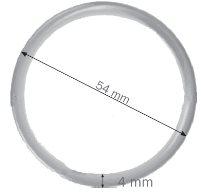
Ринго действует как комбинированная противозачаточная таблетка ( «таблетка»), но вместо приема таблетки каждый день кольцо используется в течение 3 недель подряд. Ринго высвобождает два женских половых гормона, которые предотвращают высвобождение яйцеклетки из яичников. Если не высвобождается яйцеклетка, вы не можете забеременеть.
2. Что необходимо знать перед началом использования Ringo
Общие соображения
Прежде чем начать использовать Ringo, необходимо прочитать информацию о тромбах крови в разделе 2. Особенно важно прочитать симптомы тромба крови (см. раздел 2 «Тромбы крови»).
В этом листке описаны различные ситуации, в которых вам необходимо прекратить использование Ringo или когда Ringo может быть менее надежным. В этих ситуациях не следует иметь половые отношения или необходимо принять дополнительные не гормональные меры контрацепции, такие как презерватив или другие барьерные методы. Не используйте метод ритма или метод температуры. Эти методы могут быть ненадежными, поскольку Ringo изменяет ежемесячные изменения температуры тела и шейной слизи.
Ringo, как и другие гормональные контрацептивы, не защищает от заражения ВИЧ (СПИД) или других заболеваний, передающихся половым путем.
2.1 Когда не следует использовать Ringo
Не следует использовать Ringo, если у вас есть какие-либо из следующих состояний. Сообщите вашему врачу, если у вас есть какие-либо из следующих состояний. Ваш врач обсудит с вами, какой другой метод контрацепции будет более подходящим.
- Если у вас есть (или было ранее) тромб в вене ноги (глубокий венозный тромбоз, ДВТ), легких (пульмональная эмболия, ПЭ) или других органов.
- Если вы знаете, что страдаете заболеванием, которое влияет на свертываемость крови: например, дефицит белка С, дефицит белка С, дефицит антитромбина III, фактор V Лейдена или антифосфолипидные антитела.
- Если вам необходимо хирургическое вмешательство или если вы проводите много времени без движения (см. раздел «Тромбы крови»).
- Если вы когда-либо имели инфаркт миокарда или инсульт.
- Если у вас есть (или было ранее) стенокардия (заболевание, которое вызывает сильную боль в груди и может быть первым признаком инфаркта миокарда) или транзиторная ишемическая атака (ТИА, временные симптомы инсульта).
- Если у вас есть какие-либо из следующих заболеваний, которые могут увеличить ваш риск образования тромба в артериях:
- Сахарный диабет с поражением кровеносных сосудов.
- Очень высокое кровяное давление.
- Очень высокие уровни жира в крови (холестерин или триглицериды).
- Состояние, называемое гипергомоцистеинемией.
- Если у вас есть (или было ранее) тип мигрени, называемый «мигренью с аурой».
- Если у вас есть или было воспаление поджелудочной железы (панкреатит), связанное с высокими уровнями жира в крови.
- Если у вас есть или было тяжелое заболевание печени и ваша печень еще не функционирует нормально.
- Если у вас есть или было доброкачественная или злокачественная опухоль печени.
- Если у вас есть, было или может быть рак молочной железы или генитальных органов.
- Если у вас есть вагинальное кровотечение неизвестной причины.
- Если вы аллергичны к этинилэстрадиолу или этоногестрелу или любому другому компоненту этого препарата (включая раздел 6).
Если любая из этих ситуаций возникает впервые во время использования Ringo, снимите кольцо немедленно и проконсультируйтесь с вашим врачом. Тем временем используйте не гормональные меры контрацепции.
Не используйте Ringo, если у вас есть гепатит С и вы принимаете лекарства, содержащие омбитасвир/паритапревир/ритонавир и дасабувир, глекапревир/пибрентасвир или софосбувир/велпатасвир/воксилапревир (см. также раздел 2.4 «Другие лекарства и Ringo»).
2.2 Предостережения и меры предосторожности
Когда необходимо проконсультироваться с вашим врачом?
Обратитесь за медицинской помощью немедленно
- Если вы заметили возможные признаки тромба крови, которые могут указывать на то, что вы испытываете тромб крови в ноге (т.е. глубокий венозный тромбоз), тромб крови в легких (т.е. пульмональная эмболия), инфаркт миокарда или инсульт (см. раздел «Тромбы крови»).
Для получения описания симптомов этих серьезных побочных эффектов см. «Как распознать тромб крови».
Сообщите вашему врачу, если вы испытываете любое из следующих состояний.
Если состояние развивается или ухудшается во время использования Ringo, также необходимо сообщить вашему врачу.
- Если у вашего близкого родственника есть или было рак молочной железы.
- Если вы страдаете эпилепсией (см. раздел 2.4. «Другие лекарства и Ringo»).
- Если у вас есть заболевание печени (например, желтуха) или желчного пузыря (например, камни в желчном пузыре).
- Если у вас есть болезнь Крона или язвенный колит (хроническое воспалительное заболевание кишечника).
- Если у вас есть системная красная волчанка (СКВ, заболевание, которое влияет на вашу естественную систему защиты).
- Если у вас есть гемолитико-уремический синдром (ГУС, заболевание, которое влияет на свертываемость крови и вызывает почечную недостаточность).
- Если у вас есть серповидно-клеточная анемия (наследственное заболевание красных кровяных клеток).
- Если у вас есть высокие уровни жира в крови (гипертриглицеридемия) или известные семейные антецеденты этого состояния. Гипертриглицеридемия связана с повышенным риском панкреатита (воспаления поджелудочной железы).
- Если вам необходимо хирургическое вмешательство или если вы проводите много времени без движения (см. раздел 2 «Тромбы крови»).
- Если вы недавно родили, вы имеете повышенный риск тромба крови. Вы должны спросить вашего врача, когда можно начать принимать Ringo после родов.
- Если у вас есть воспаление вен, расположенных под кожей (поверхностный тромбофлебит).
- Если у вас есть варикоз.
- Если вы страдаете заболеванием, которое впервые появилось или ухудшилось во время беременности или предыдущего использования гормональных контрацептивов (например, потеря слуха, порфирия [заболевание крови], герпес беременности [кожная сыпь с пузырьками во время беременности] или хорея Сиденгама [нервное заболевание, при котором возникают непроизвольные движения]; наследственный ангиеодем [обратитесь к вашему врачу немедленно, если вы испытываете симптомы ангиеодема, такие как отек лица, языка или горла, или затруднение глотания, или крапивница с затруднением дыхания]).
- Если у вас есть или было хлоазма (желтовато-коричневые пятна на коже, называемые «пятнами беременности», особенно на лице); если это так, избегайте чрезмерного воздействия солнца или ультрафиолетового излучения.
- Если у вас есть состояния, которые затрудняют использование Ringo, например, если вы страдаете запором, prolapse матки (опущение матки или шейки) или испытываете боль во время половых отношений.
- Если у вас есть сильное, частое, болезненное или жгучее мочеиспускание, и вы не можете определить местонахождение кольца во влагалище. Эти симптомы могут указывать на случайное введение Ringo в мочевой пузырь.
Тромбы крови
Использование гормонального контрацептива, такого как Ringo, увеличивает ваш риск тромба крови по сравнению с неиспользованием его. В редких случаях тромб крови может блокировать кровеносные сосуды и вызвать серьезные проблемы.
Тромбы крови могут образовываться:
- В венах (это называется «венозный тромбоз», «венозный тромбоэмболизм» или ВТЭ).
- В артериях (это называется «артериальный тромбоз», «артериальный тромбоэмболизм» или АТЭ).
Восстановление после тромба крови не всегда полное. В редких случаях могут быть серьезные долгосрочные последствия или, очень редко, могут быть смертельными.
Важно помнить, что общий риск вредного тромба крови из-за Ringo небольшой.
КАК РАСПОЗНАТЬ ТРОМБ КРОВИ
Обратитесь за медицинской помощью немедленно, если вы заметили любой из следующих признаков или симптомов.
Испытываете ли вы любой из этих признаков? | Что вы можете испытывать? |
| Глубокий венозный тромбоз |
Если вы не уверены, проконсультируйтесь с врачом, поскольку некоторые из этих симптомов, такие как кашель или одышка, могут быть перепутаны с более легким заболеванием, таким как респираторная инфекция (например, «простуда»). | Пульмональная эмболия |
Симптомы, которые возникают чаще в одном глазу:
| Тромбоз вен сетчатки (тромб крови в глазу). |
| Инфаркт миокарда |
Иногда симптомы инсульта могут быть кратковременными, с почти полным восстановлением, но все равно необходимо обратиться за медицинской помощью немедленно, поскольку вы можете быть подвержены риску другого инсульта. | Инсульт |
| Тромбы крови, блокирующие другие кровеносные сосуды. |
ТРОМБЫ КРОВИ В ВЕНЕ
Что может произойти, если образуется тромб крови в вене?
- Использование гормональных контрацептивов, таких как Ringo, связано с повышенным риском тромба крови в венах (венозный тромбоз). Однако, эти побочные эффекты редки. Они возникают чаще в первом году использования гормонального контрацептива.
- Если образуется тромб крови в вене ноги или ступни, это может вызвать глубокий венозный тромбоз (ГВТ).
- Если тромб крови переместится из ноги и застрянет в легких, это может вызвать пульмональную эмболию.
- В очень редких случаях может образоваться тромб в вене другого органа, такого как глаз (тромбоз вен сетчатки).
Когда повышается риск тромба крови в вене?
Риск тромба крови в вене выше в течение первого года, когда вы впервые начинаете принимать гормональный контрацептив. Риск может быть выше также, если вы снова начинаете принимать гормональный контрацептив (тот же препарат или другой) после перерыва 4 недели или более.
После первого года риск снижается, но всегда остается немного выше, чем если бы вы не принимали гормональный контрацептив.
Когда вы прекращаете использовать Ringo, ваш риск тромба крови возвращается к норме в течение нескольких недель.
Каков риск тромба крови?
Риск зависит от вашего естественного риска ВТЭ и типа гормонального контрацептива, который вы принимаете.
Общий риск тромба крови в ноге или легких (ГВТ или ПЭ) с Ringo небольшой.
- Из 10 000 женщин, которые не используют гормональный контрацептив и не беременны, около 2 испытывают тромб крови в течение года.
- Из 10 000 женщин, которые используют гормональный контрацептив, содержащий левоноргестрел, норетистерон или норгестимат, около 5-7 испытывают тромб крови в течение года.
- Из 10 000 женщин, которые используют гормональный контрацептив, содержащий норелгестромин или этоногестрел, такие как Ringo, около 6-12 женщин испытывают тромб крови в течение года.
- Риск тромба крови зависит от ваших личных антецедентов (см. «Факторы, повышающие риск тромба крови» ниже).
Риск тромба крови в течение года | |
Женщины, которые не используютгормональный контрацептив и не беременны | Около 2 из 10 000 женщин |
Женщины, которые используют таблетку гормонального контрацептива, содержащую левоноргестрел, норетистерон или норгестимат | Около 5-7 из 10 000 женщин |
Женщины, которые используют Ringo | Около 6-12 из 10 000 женщин |
Факторы, повышающие риск тромба крови в вене
Риск тромба крови с Ringo небольшой, но некоторые состояния повышают риск. Ваш риск выше:
- Если у вас избыточный вес (индекс массы тела или ИМТ более 30 кг/м2).
- Если у вашего близкого родственника был тромб крови в ноге, легких или другом органе в молодом возрасте (т.е. до 50 лет). В этом случае вы можете иметь наследственное заболевание, влияющее на свертываемость крови.
- Если вам необходимо хирургическое вмешательство или если вы проводите много времени без движения из-за травмы или заболевания или если у вас есть гипс на ноге. Возможно, необходимо будет прекратить использование Ringo за несколько недель до операции или во время снижения подвижности. Если вам необходимо прекратить использование Ringo, спросите вашего врача, когда можно снова начать использовать его.
- С увеличением возраста (особенно после 35 лет).
- Если вы недавно родили.
Риск тромба крови повышается, если у вас есть несколько состояний.
Длительные авиаперелеты (более 4 часов) могут временно повысить риск тромба крови, особенно если у вас есть другие факторы риска, перечисленные выше.
Важно сообщить вашему врачу, если вы испытываете любое из вышеуказанных состояний, даже если вы не уверены. Ваш врач может решить, что необходимо прекратить использование Ringo.
Если любое из вышеуказанных состояний меняется во время использования Ringo, например, если ваш близкий родственник испытал тромб без известной причины или вы значительно увеличили вес, сообщите вашему врачу.
ТРОМБЫ КРОВИ В АРТЕРИИ
Что может произойти, если образуется тромб крови в артерии?
Как и тромб крови в вене, тромб в артерии может вызвать серьезные проблемы. Например, он может вызвать инфаркт миокарда или инсульт.
Факторы, повышающие риск тромба крови в артерии
Важно отметить, что риск инфаркта миокарда или инсульта из-за Ringo очень небольшой, но он может повыситься:
- С возрастом (после 35 лет).
- Если вы курите.Когда вы используете гормональный контрацептив, такой как Ringo, вам рекомендуется бросить курить. Если вы не можете бросить курить и вам более 35 лет, ваш врач может порекомендовать использовать другой тип контрацептива.
- Если у вас избыточный вес.
- Если у вас высокое кровяное давление.
- Если у вашего близкого родственника был инфаркт миокарда или инсульт в молодом возрасте (до 50 лет). В этом случае вы также можете иметь повышенный риск инфаркта миокарда или инсульта.
- Если у вас или вашего близкого родственника высокий уровень жира в крови (холестерин или триглицериды).
- Если вы страдаете мигренью, особенно мигренью с аурой.
- Если у вас есть проблема с сердцем (заболевание клапанов, нарушение сердечного ритма, называемое фибрилляцией предсердий).
- Если у вас есть диабет.
Если у вас есть одно или несколько из этих состояний или если любое из них особенно тяжелое, риск тромба крови может быть еще выше.
Если любое из вышеуказанных состояний меняется во время использования Ringo, например, если вы начинаете курить, ваш близкий родственник испытал тромб без известной причины или вы значительно увеличили вес, сообщите вашему врачу.
Рак
Следующая информация получена из исследований гормональных контрацептивов и может быть применима к Ringo. Нет информации о введении гормональных контрацептивов через вагину (например, Ringo).
Были обнаружены случаи рака молочной железы с немного более высокой частотой у женщин, использующих гормональные контрацептивы, но неизвестно, связано ли это с лечением. Например, возможно, что опухоли обнаруживаются чаще у женщин, использующих гормональные контрацептивы, потому что они более часто проходят медицинские осмотры. Это повышение частоты снижается постепенно после прекращения лечения. Важно регулярно осматривать ваши груди и сообщать вашему врачу, если вы заметите любую опухоль. Сообщите вашему врачу, если у вашего близкого родственника есть или было рак молочной железы (см. раздел 2.2 «Предостережения и меры предосторожности»).
Редко сообщались случаи доброкачественных или злокачественных опухолей печени у женщин, использующих гормональные контрацептивы. Обратитесь к вашему врачу, если у вас есть сильная и необычная боль в животе.
У пользователей гормональных контрацептивов было обнаружено, что они реже страдают раком эндометрия (ткани, выстилающей матку) или яичников. Это также может быть верно для Ringo, но это не подтверждено.
Психиатрические расстройства
Некоторые женщины, использующие гормональные контрацептивы, такие как Ringo, сообщали о депрессии или пониженном настроении. Депрессия может быть тяжелой и иногда может вызывать суицидальные мысли. Если вы испытываете изменения настроения и депрессивные симптомы, обратитесь к вашему врачу за дополнительной медицинской консультацией как можно скорее.
- Дети и подростки
Не установлена безопасность и эффективность Ringo у подростков моложе 18 лет.
- Другие лекарства и Ringo
Всегда информируйте своего врача о том, какие лекарства или лекарственные растения вы принимаете. Также сообщите любому врачу или дантисту (или фармацевту), который назначает вам другое лекарство, что вы используете Ринго. Они смогут сообщить вам, нужно ли вам принимать какие-либо дополнительные меры контрацепции (например, использовать мужские презервативы) и если да, то на какой срок, или же если необходимо изменить использование другого лекарства.
Некоторые лекарства
- могут влиять на уровень Ринго в крови;
- могут сделать его менее эффективным для предотвращения беременности;
- могут вызывать неожиданные кровотечения.
К ним относятся лекарства, используемые для лечения:
- эпилепсии (например, примидона, фенитоина, барбитуратов, карбамазепина, окскарбазепина, топирамата, фельбамата);
- туберкулеза (например, рифампицина);
- инфекции ВИЧ (например, ритонавира, нельфинавира, невирапина, эфавиренза);
- инфекции вируса гепатита С (например, босепревира, телапревира);
- других инфекционных заболеваний (например, гризеофульвина);
- высокого давления в кровеносных сосудах легких (бозентана);
- депрессивных состояний (лекарственного растения Зверобой).
Если вы принимаете лекарства или лекарственные растения, которые могут сделать Ринго менее эффективным, вы должны использовать также барьерный метод контрацепции (например, мужской презерватив). Поскольку эффект другого лекарства на Ринго может длиться до 28 дней после отмены лекарства, в течение этого времени необходимо использовать дополнительный барьерный метод контрацепции. Примечание: Не используйте Ринго вместе с диафрагмой, цервикальным колпачком или женским презервативом.
Ринго может влиять на эффект других лекарств, например:
- лекарств, содержащих циклоспорин.
- антиэпилептического ламотриджина (это может привести к увеличению частоты судорог).
Не используйте Ринго, если у вас гепатит С и вы принимаете лекарства, содержащие омбитасвир/паритапревир/ритонавир и дасабувир, глекапревир/пибрентасвир или софосбувир/велпатасвир/воксилапревир, могут произойти увеличения результатов печеночных тестов (увеличение печеночной ферменты ALT).
Ваш врач назначит вам другой тип контрацепции до начала лечения этими лекарствами.
Ринго можно снова использовать примерно через 2 недели после окончания этого лечения. См. раздел 2.1 «Когда не следует использовать Ринго».
Проконсультируйтесь с вашим врачом или фармацевтом перед приемом любого лекарства.
Тампоны можно использовать во время использования Ринго. Сначала наденьте Ринго, а затем тампон. Будьте особенно осторожны при удалении тампона, чтобы не вытолкнуть случайно кольцо. Если кольцо все-таки вышло, просто промойте его холодной или теплой водой и сразу же наденьте обратно.
Кольцо может открыться, когда вы также используете вагинальный продукт, такой как смазка или лечение инфекции (см. раздел 3.4. «Что делать, если... кольцо открылось»). Использование спермицидов или препаратов для лечения вагинальных грибков не снижает противозачаточную эффективность Ринго.
Лабораторные тесты
Если вам делают анализ крови или мочи, сообщите вашему врачу, что вы используете Ринго, поскольку это может повлиять на результат некоторых тестов.
- Беременность и лактация
Ринго не должны использовать беременные женщины или те, кто подозревает, что они могут быть беременными. Если вы забеременеете во время использования Ринго, вам необходимо удалить кольцо и проконсультироваться с вашим врачом.
Если вы хотите прекратить использование Ринго, потому что хотите забеременеть, см. раздел 3.5 «Если вы хотите прекратить использование Ринго».
Обычно не рекомендуется использовать Ринго во время грудного вскармливания. Если вы хотите использовать Ринго во время грудного вскармливания, проконсультируйтесь с вашим врачом.
- Вождение и использование машин
Маловероятно, что Ринго повлияет на вашу способность управлять транспортными средствами или использовать машины.
3. Как использовать Ringo
Вы можете самостоятельно поставить и удалить Ringo. Ваш врач укажет, когда начать использовать его впервые. Вагинальное кольцо должно быть введено в день правильного менструального цикла (см. раздел 3.3 «Когда начать с первого кольца») и оставаться во влагалище в течение 3 недель подряд. Регулярно проверяйте, что Ringo находится во влагалище (например, перед и после половых отношений), чтобы убедиться, что вы защищены от беременности. После третьей недели удалите Ringo и сделайте перерыв на одну неделю. Обычно у вас будет менструация или регла во время этого перерыва без кольца.
Пока вы используете Ringo, не должны использовать некоторые женские барьерные методы контрацепции, такие как вагинальный диафрагма, цервикальная шапочка или женский презерватив. Эти барьерные методы контрацепции не должны использоваться как дополнительный метод контроля над рождаемостью, поскольку Ringo может повлиять на правильное положение диафрагмы, цервикальной шапочки или женского презерватива. Однако вы можете использовать мужской презерватив как дополнительный барьерный метод контрацепции.
3.1 Способ надевания и снятия Ringo
- Перед тем, как надеть кольцо, проверьте, что оно не просрочено (см. раздел 5 «Хранение Ringo»).
- Мойте руки перед тем, как надеть или снять кольцо.
- Выберите положение, которое будет наиболее удобным для вас, чтобы ввести кольцо, например, стоя с одной ногой, поднятой вверх, в положении на корточках или лежа.
- Удалите Ringo из упаковки.
- Держите кольцо между указательным и большим пальцами, нажмите на противоположные стороны и введите кольцо во влагалище (см. рисунки 1-4). Когда Ringo находится на месте, вы не должны ничего чувствовать. Если вы чувствуете себя неудобно, мягко измените положение Ringo (например, толкните кольцо немного глубже во влагалище), пока не почувствуете себя комфортно. Точное положение кольца во влагалище не имеет значения.
- Через 3 недели удалите Ringo из влагалища. Вы можете сделать это, зацепив кольцо указательным пальцем или держа его между пальцами и потянув наружу (см. рисунок 5). Если вы не можете удалить кольцо, несмотря на то, что нашли его, обратитесь к врачу.
- Удалите использованное кольцо вместе с обычными бытовыми отходами, предпочтительно в упаковке. Не выбрасывайте Ringo в туалет.
Рисунок 1 Удалите Ringo из упаковки |
Рисунок 3 Выберите удобное положение, чтобы надеть кольцо |
Рисунок 2 Нажмите на кольцо | |
Рисунок 4А Рисунок 4Б Рисунок 4В Наденьте кольцо во влагалище одной рукой (Рисунок 4А), если необходимо, разделите губы влагалища другой рукой. Введите кольцо во влагалище, пока не почувствуете себя комфортно (Рисунок 4Б). Оставьте кольцо во влагалище в течение 3 недель (Рисунок 4В). | |
| Рисунок 5 Ringo можно удалить, зацепив кольцо указательным пальцем или держа его между пальцами и потянув наружу. |
3.2 Три недели внутри, одна неделя снаружи
- Вагинальное кольцо должно оставаться во влагалище с дня, когда его надели, в течение 3 недель подряд, без перерыва.
- Через 3 недели удалите кольцо в тот же день недели, когда его надели, и примерно в то же время. Например, если вы надели его в среду примерно в 22:00, вы должны удалить его через 3 недели, в среду, примерно в 22:00.
- После удаления кольца не используйте его в течение одной недели. Во время этой недели должно произойти вагинальное кровотечение. Обычно оно начинается через 2-3 дня после удаления Ringo.
- Наденьте новое кольцо точно через неделю после перерыва (снова в тот же день недели и примерно в то же время), даже если у вас еще не прекратилось кровотечение.
- Если вы наденете новое кольцо более чем через 3 часа после запланированного времени, эффективность контрацепции может уменьшиться. Следуйте инструкциям раздела 3.4 «Что делать, если забыли надеть новое кольцо после перерыва без кольца».
Если вы используете Ringo, как описано выше, ваше кровотечение будет происходить примерно в те же дни каждого месяца.
3.3 Когда начать с первого кольца
- Если вы не использовали гормональную контрацепцию в предыдущем месяце
Наденьте Ringo в первый день вашего естественного цикла (т.е. в первый день менструации). Ringo начинает действовать сразу. Вам не нужно принимать другие меры контрацепции.
Также можно начать использовать Ringo между 2-м и 5-м днем цикла, но если у вас будут половые отношения в течение первых 7 дней использования Ringo, убедитесь, что используете дополнительный метод контрацепции (мужской презерватив). Следуйте этой рекомендации только при первом использовании Ringo.
- Если вы использовали комбинированные оральные контрацептивы в предыдущем месяце
Начните использовать Ringo не позднее дня после перерыва в использовании вашей текущей таблетки. Если упаковка вашей таблетки также содержит неактивные таблетки, начните использовать Ringo не позднее дня после последней неактивной таблетки. Если вы не уверены, какая таблетка является последней, проконсультируйтесь с врачом или фармацевтом. Никогда не продлевайте дни перерыва в использовании вашей текущей таблетки более рекомендованного срока.
Если вы принимали свою текущую таблетку непрерывно и правильно и уверены, что не беременны, вы также можете прекратить принимать таблетку в любой день цикла и начать использовать Ringo сразу.
- Если вы использовали трансдермальный пластырь в предыдущем месяце
Начните использовать Ringo не позднее дня после перерыва без пластыря. Не продлевайте дни перерыва без пластыря более рекомендованного срока.
Если вы использовали пластырь непрерывно и правильно и уверены, что не беременны, вы также можете снять пластырь в любой день и начать использовать Ringo сразу.
- Если вы использовали таблетки только с прогестагеном в предыдущем месяце
Вы можете прекратить принимать таблетки с прогестагеном в любой день и начать использовать Ringo на следующий день в то же время. Но убедитесь, что также используете дополнительный метод контрацепции (например, мужской презерватив) в течение первых 7 дней использования кольца.
- Если вы использовали инъекции, имплант или систему внутриматочной доставки гормонов (прогестаген) в предыдущем месяце
Начните использовать Ringo в момент, когда вам должна быть сделана следующая инъекция или в день удаления импланта или системы. Но убедитесь, что используете дополнительный метод контрацепции (например, мужской презерватив) в течение первых 7 дней использования кольца.
- После родов
Если вы только что родили ребенка, ваш врач может посоветовать вам подождать до появления первой нормальной менструации, прежде чем начать использовать Ringo. Иногда возможно начать использовать его раньше, ваш врач посоветует, как это сделать. Если вы кормите грудью и хотите использовать Ringo, проконсультируйтесь с врачом сначала.
- После аборта
Проконсультируйтесь с врачом.
3.4 Что делать, если...
Ваше кольцо было случайно удалено из влагалища
Ringo может быть случайно удалено из влагалища, например, если оно не было введено правильно, при удалении тампона, во время половых отношений, если у вас есть запор или если у вас есть prolaps матки (опущение матки). Поэтому регулярно проверяйте, что кольцо находится во влагалище (например, перед и после половых отношений).
Ваше кольцо было вне влагалища временно
Ringo все еще может защитить вас от беременности, но это зависит от того, сколько времени оно было вне влагалища.
Если кольцо было вне влагалища:
- менее 3 часов, оно все еще защитит вас от беременности. Вымойте кольцо холодной или теплой водой (не используйте горячую воду) и введите его обратно во влагалище как можно скорее, но только если кольцо было вне влагалища менее 3 часов.
- более 3 часов в 1-й или 2-й неделе, оно может не защитить вас от беременности. Вымойте кольцо холодной или теплой водой (не используйте горячую воду) и введите его обратно во влагалище как можно скорее. Оставьте его во влагалище не менее 7 дней подряд. Используйте мужской презерватив, если у вас будут половые отношения в течение этих 7 дней. Если вы были в 1-й неделе и имели половые отношения в течение 7 дней перед этим, существует возможность того, что вы могли забеременеть. В этом случае проконсультируйтесь с врачом.
- более 3 часов в 3-й неделе, оно может не защитить вас от беременности. Удалите кольцо и выберите одну из двух следующих опций:
- Наденьте новое кольцо сразу.
Надев новое кольцо, вы начнете новый цикл использования в течение 3 недель и, возможно, не будете иметь менструацию. Однако может произойти межменструальное кровотечение или пятна во время этого цикла.
- Не надевайте новое кольцо. Подождите межменструальное кровотечение и наденьте новое кольцо не позднее 7 дней после удаления предыдущего кольца или его удаления.
Выберите эту опцию только в том случае, если вы использовали Ringo непрерывно в течение 7 дней перед этим.
- неизвестный период времени может не защитить вас от беременности. Сделайте тест на беременность и проконсультируйтесь с врачом, прежде чем надеть новое кольцо.
Кольцо открылось
В очень редких случаях кольцо Ringo может открыться. Были зарегистрированы случаи травмы влагалища, связанные с разрывом кольца. Если вы заметили, что Ringo открылось, удалите кольцо и наденьте новое как можно скорее. Примите дополнительные меры контрацепции (например, мужской презерватив) в течение 7 дней. Если у вас были половые отношения до того, как вы заметили, что кольцо открылось, проконсультируйтесь с врачом.
Вы надели более одного кольца
Не было зарегистрировано никаких серьезных повреждений из-за передозировки гормонов Ringo. Если вы случайно надели более одного кольца, вы можете чувствовать себя плохо (тошнота), рвать или иметь вагинальное кровотечение. Удалите лишнее кольцо и обратитесь к врачу, если эти симптомы не исчезнут. Также вы можете позвонить в Центр токсикологической информации, телефон: 91 562 04 20, указав лекарство и количество, использованное.
Если вы забыли надеть новое кольцо после перерыва без кольца
Ваш перерыв без кольцадлился более 7 дней. Наденьте новое кольцо во влагалище как можно скорее. Примите дополнительные меры контрацепции (например, мужской презерватив) если у вас будут половые отношения в течение следующих 7 дней. Если у вас были половые отношения во время этого перерыва без кольца, существует возможность того, что вы могли забеременеть. В этом случае сообщите врачу немедленно. Чем дольше перерыв без кольца, тем выше риск беременности.
Если вы забыли удалить кольцо
- Если кольцо было во влагалище между 3 и 4 неделями, оно все еще защитит вас от беременности. Подождите неделю без кольца и затем наденьте новое.
- Если кольцо было во влагалище более 4 недель, существует возможность беременности. Обратитесь к врачу, прежде чем начать использовать новое кольцо.
Если менструация или регла не появляется
- Вы использовали Ringo согласно инструкциям.
Если менструация не появляется, но вы использовали Ringo согласно инструкциям и не принимали другие лекарства, очень маловероятно, что вы беременны. Продолжайте использовать Ringo в обычном режиме. Однако, если у вас есть две последовательные неявки, вы можете быть беременной, поэтому сообщите врачу немедленно. Не надевайте следующее кольцо, пока врач не проверит, что вы не беременны.
- Если вы отклонились от рекомендаций по использованию Ringo.
Если ваша обычная менструация не появилась во время перерыва в одну неделю без кольца и вы отклонились от рекомендуемого режима, существует возможность того, что вы можете быть беременной, поэтому обратитесь к врачу, прежде чем надеть новое кольцо.
Если у вас есть неожиданное кровотечение
У некоторых женщин во время использования Ringo может появиться неожиданное вагинальное кровотечение между менструациями. Вам может потребоваться гигиеническая защита. Тем не менее, продолжайте использовать кольцо в обычном режиме, не удаляя его. Если кровотечение продолжается, становится более интенсивным или начинается снова, проконсультируйтесь с врачом.
Если вы хотите изменить день начала менструации или реглы
Если вы используете Ringo согласно инструкциям, ваша менструация (кровотечение от дефицита) начнется во время перерыва без кольца. Если вы хотите изменить день начала, вам нужно сократить (никогда не продлевать!) перерыв без кольца.
Например, если ваша менструация обычно начинается в пятницу, вы можете изменить ее на вторник, т.е. на 3 дня раньше, начиная с следующего месяца. Просто наденьте следующее кольцо на 3 дня раньше обычного.
Если перерыв очень короткий (например, 3 дня или меньше), возможно, что у вас не будет обычной менструации. У вас может быть пятна (капли или пятна крови) или межменструальное кровотечение во время использования следующего кольца.
Если вы не уверены, как это сделать, проконсультируйтесь с врачом.
Если вы хотите отложить менструацию или реглу
Хотя это не рекомендуемый режим, вы можете отложить менструацию (кровотечение от дефицита), надев новое кольцо сразу после удаления текущего, без перерыва между кольцами. Вы можете оставить новое кольцо во влагалище не более 3 недель. Во время использования нового кольца у вас может быть пятна (капли или пятна крови) или нерегулярное кровотечение. Когда вы захотите, чтобы началась менструация, просто удалите кольцо. Подождите обычный перерыв в одну неделю без кольца и затем наденьте новое кольцо.
Вы можете проконсультироваться с врачом, прежде чем решить отложить менструацию.
3.5 Если вы хотите прекратить использовать Ringo
Вы можете прекратить использовать Ringo в любой момент, когда захотите. Если вы не хотите забеременеть, проконсультируйтесь с врачом о других методах контрацепции.
Если вы прекратите использовать Ringo, потому что хотите забеременеть, рекомендуется подождать до появления первой нормальной менструации, прежде чем попытаться забеременеть. Это поможет вам рассчитать дату родов.
4. Возможные побочные эффекты
Как и все лекарства, Ринго может вызывать побочные эффекты, хотя не все люди их испытывают. Если вы испытываете любой побочный эффект, особенно если он тяжелый и постоянный, или если у вас есть какие-либо изменения в здоровье, которые, по вашему мнению, могут быть связаны с Ринго, проконсультируйтесь с вашим врачом.
Все женщины, принимающие комбинированные гормональные контрацептивы, имеют повышенный риск образования тромбов в венах (тромбоэмболия вен) или тромбов в артериях (тромбоэмболия артерий). Для получения более подробной информации о различных рисках, связанных с приемом комбинированных гормональных контрацептивов, см. раздел 2 «Что вам нужно знать перед началом использования Ринго».
Если вы аллергичны к любому из компонентов Ринго (гиперчувствительность), вы можете испытывать следующие симптомы (частота неизвестна): ангиедема [отек лица, языка или горла, затруднение глотания] или крапивница, в сочетании с затруднением дыхания. Если это происходит, снимите Ринго и немедленно обратитесь к вашему врачу.
Пользователи Ринго сообщили о следующих побочных эффектах:
Частые:могут затронуть до 1 из 10 женщин.
- боль в животе, дискомфорт (тошнота)
- инфекция влагалища, вызванная дрожжами (podobная кандидозу рта), неприятные ощущения в влагалище, зуд гениталий, вагинальные выделения
- головная боль или мигрень, депрессивное настроение, снижение либидо
- боль в груди, боль в тазу, болезненные менструации
- акне
- прибавка в весе
- выталкивание кольца
Редкие:могут затронуть до 1 из 100 женщин.
- нарушения зрения, головокружение
- вздутие живота, рвота, диарея или запор
- чувство усталости, раздражения или раздражительности, изменения настроения, изменения в эмоциональном состоянии
- задержка жидкости в организме (отек)
- инфекция мочи или мочевого пузыря
- затруднение, боль при мочеиспускании; частое мочеиспускание
- проблемы в сексуальных отношениях, такие как боль, кровотечение или ощущение кольца партнером
- повышение артериального давления
- повышение аппетита
- боль в спине, судороги в мышцах, боль в ногах или руках
- снижение чувствительности кожи
- напряжение или боль в груди или увеличение ее размера; фиброцистическая болезнь молочной железы (кисты в молочной железе, которые могут увеличиваться или болеть)
- воспаление шейки матки, полипы, растущие на шейке матки, смещение ткани шейки матки (эктропион)
- изменения менструального цикла (более интенсивные, длительные, нерегулярные или отсутствующие), неприятные ощущения в тазу, предменструальный синдром, маточные спазмы
- инфекция влагалища (вызванная грибами или бактериями), жжение, запах, боль, неприятные ощущения или сухость влагалища или вульвы
- потеря волос, экзема, зуд, высыпания или приливы
- крапивница
Очень редкие:могут затронуть до 1 из 1000 женщин.
- вредные тромбы в вене или артерии, например:
- в ноге или ступне (т.е. ТВП)
- в легком (т.е. ЭП)
- инфаркт миокарда
- инсульт
- легкий инсульт или временные симптомы, подобные инсульту, называемые транзиторной ишемической атакой (ТИА)
- тромбы в печени, желудке/кишечнике, почках или глазу
Вероятность образования тромба может быть выше, если у вас есть другие состояния, которые увеличивают этот риск (см. раздел 2 для получения более подробной информации о состояниях, которые увеличивают риск тромбов и симптомах тромба).
- секреция молочной железы
Частота неизвестна(не может быть оценена на основе доступных данных).
- хлоазма (желтовато-коричневые пятна на коже, особенно на лице)
- неприятные ощущения в половом члене партнера (раздражение, высыпания, зуд)
- невозможность снять кольцо без медицинской помощи (например, из-за его прилипания к стенке влагалища)
- вагинальная травма, связанная с разрывом кольца.
Были зарегистрированы случаи рака молочной железы и опухолей в печени у женщин, принимающих комбинированные гормональные контрацептивы. Для получения более подробной информации см. раздел 2.2 Предостережения и меры предосторожности, Рак.
В очень редких случаях кольцо Ринго может открыться. Для получения более подробной информации см. раздел 3.4 Что делать, если... Кольцо открывается.
Сообщение о побочных эффектах:
Если вы испытываете любой побочный эффект, проконсультируйтесь с вашим врачом или фармацевтом, даже если это возможные побочные эффекты, которые не перечислены в этом листке. Вы также можете сообщить о них напрямую через систему фармаковигиланса Испании: https://www.notificaram.es. Сообщая о побочных эффектах, вы можете способствовать предоставлению более подробной информации о безопасности этого лекарства.
5. Хранение Ринго
Храните это лекарство в недоступном для детей месте.
Если вы обнаружите, что ребенок подвергся воздействию гормонов Ринго, проконсультируйтесь с вашим врачом.
Не требует специальных условий хранения.
Не используйте это лекарство после даты истечения срока годности, указанной на упаковке и на каждом блистере после «СГ». Дата истечения срока годности - последний день месяца, указанного.
Не используйте это лекарство, если вы заметили изменения цвета кольца или любой видимый признак повреждения.
Утилизируйте использованное кольцо с обычными бытовыми отходами, предпочтительно в его упаковке с крышкой. Это лекарство не должно быть выброшено в туалет. Как и с другими лекарствами, не выбрасывайте неп использованные или просроченные кольца в канализацию или мусор.
Лекарства не должны быть выброшены в канализацию или мусор. Поместите упаковку и лекарства, которые вам больше не нужны, в пункт сбора лекарств в аптеке. В случае сомнений спросите у вашего фармацевта, как утилизировать упаковку и лекарства, которые вам больше не нужны. Таким образом, вы будете способствовать защите окружающей среды.
6. Содержание упаковки и дополнительная информация
Состав Ринго
- Активные вещества - этоногестрел и этинилэстрадиол. Каждое кольцо содержит 11,7 мг этоногестрела и 2,7 мг этинилэстрадиола.
- Другие компоненты - сополимер ацетата винила и этилена (28% и 9% ацетата винила) (тип пластика, не растворимого в организме) и стеарат магния.
Этоногестрел и этинилэстрадиол выделяются из кольца в соотношении 0,120 мг/день и 0,015 мг/день соответственно в течение трех недель.
Внешний вид Ринго и содержание упаковки
Ринго - гибкое, прозрачное и почти бесцветное кольцо, диаметром около 54 мм.
Каждое кольцо упаковано в ламинированный алюминиевый блистер, который можно закрыть повторно. Блистер поставляется в картонной коробке вместе с этим листком. Каждая коробка содержит 1 или 3 кольца.
Возможно, будут продаваться только некоторые размеры упаковок.
Владелец разрешения на продажу и ответственный за производство
Kern Pharma, S.L.
Венус, 72 - Пол. Инд.Колон II
08228 Террасса - Барселона
Испания
Дата последнего обновления этого листка: Ноябрь 2022
Подробная и актуальная информация о этом лекарстве доступна на сайте Испанского агентства по лекарствам и медицинским продуктам (AEMPS) (http://www.aemps.gob.es/)

Сколько стоит РИНГО 0,120 МГ/0,015 МГ КАЖДЫЕ 24 ЧАСА, ВАГИНАЛЬНАЯ СИСТЕМА ДОСТАВКИ в Испании в 2025 году?
Средняя цена на РИНГО 0,120 МГ/0,015 МГ КАЖДЫЕ 24 ЧАСА, ВАГИНАЛЬНАЯ СИСТЕМА ДОСТАВКИ в ноябрь, 2025 года составляет около 9.9 евро. Финальная стоимость может зависеть от региона, конкретной аптеки и рецептурного статуса. Для точной информации лучше проверить онлайн или в ближайшей аптеке.
- Страна регистрации
- Средняя цена в аптеках9.9 EUR
- Активное вещество
- Требуется рецептДа
- Производитель
- Информация носит справочный характер и не является медицинской рекомендацией. Перед приемом любых препаратов проконсультируйтесь с врачом. Oladoctor не несет ответственности за медицинские решения, принятые на основе этого контента.
- Аналоги РИНГО 0,120 МГ/0,015 МГ КАЖДЫЕ 24 ЧАСА, ВАГИНАЛЬНАЯ СИСТЕМА ДОСТАВКИФорма выпуска: ВАГИНАЛЬНОЕ УСТРОЙСТВО, 0,120 мг/0,015 мг каждые 24 часаАктивное вещество: vaginal ring with progestogen and estrogenПроизводитель: Organon Salud S.L.Требуется рецептФорма выпуска: ВАГИНАЛЬНОЕ УСТРОЙСТВО, 0,120 мг/0,015 мгАктивное вещество: vaginal ring with progestogen and estrogenПроизводитель: Laboratorios Cinfa S.A.Требуется рецептФорма выпуска: ВАГИНАЛЬНОЕ УСТРОЙСТВО, 11,7 мг этоногестрела / 2,7 мг этинилэстрадиолаАктивное вещество: vaginal ring with progestogen and estrogenПроизводитель: Organon Salud S.L.Требуется рецепт
Аналоги РИНГО 0,120 МГ/0,015 МГ КАЖДЫЕ 24 ЧАСА, ВАГИНАЛЬНАЯ СИСТЕМА ДОСТАВКИ в других странах
Лучшие аналоги с тем же действующим веществом и терапевтическим эффектом.
Аналог РИНГО 0,120 МГ/0,015 МГ КАЖДЫЕ 24 ЧАСА, ВАГИНАЛЬНАЯ СИСТЕМА ДОСТАВКИ в Польща
Аналог РИНГО 0,120 МГ/0,015 МГ КАЖДЫЕ 24 ЧАСА, ВАГИНАЛЬНАЯ СИСТЕМА ДОСТАВКИ в Україна
Врачи онлайн по РИНГО 0,120 МГ/0,015 МГ КАЖДЫЕ 24 ЧАСА, ВАГИНАЛЬНАЯ СИСТЕМА ДОСТАВКИ
Консультация по дозировке, побочным эффектам, взаимодействиям, противопоказаниям и продлению рецепта на РИНГО 0,120 МГ/0,015 МГ КАЖДЫЕ 24 ЧАСА, ВАГИНАЛЬНАЯ СИСТЕМА ДОСТАВКИ – по решению врача и с учетом местных правил.



